Centre of Excellence
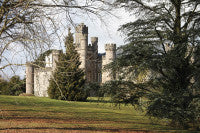 The Vale Resort, at Hensol, near Cardiff, is a leading independent four-star hotel, golf, leisure and spa resort based within a beautiful 650-acre private rural parkland setting.
The Vale Resort, at Hensol, near Cardiff, is a leading independent four-star hotel, golf, leisure and spa resort based within a beautiful 650-acre private rural parkland setting.
The resort, and neighbouring Hensol Castle Park, are owned by the Leekes Group, an independent, family-run group of leisure and retail businesses under the chairmanship of Gerald Leeke OBE.
The Leeke family has contributed significantly to the profile and growth of Welsh business and the local economy over the past thirty years. They were the promoters that enabled the first British Open squash tournament to come to Wales in the 1980s, and a commitment to sport has been underpinned with decades of backing for grass-roots development in football, rugby, swimming, golf and squash.
The resort's origins go back to 1993, when the Leeke family took ownership of the local golf club at Hensol, which they developed into the world-class Vale Hotel, Golf & Spa Resort. It is run by Managing Director, Stephen Leeke, the eldest son of Gerald Leeke.
The successful expansion and development of this high profile business has continued unabated throughout the last seventeen years. A hugely successful Health and Racquets Club and Spa was officially opened in 1998, and is the largest private health club in Wales.

The luxurious 143-bedroom hotel opened its doors to its first hotel guests in November 1999, just before the Rugby World Cup, and has now played host to a staggering 750,000 hotel guests during its first decade in business.
The family has invested a further £35 million into buying and developing the Hensol Castle Park with the aim of transforming the grade one listed castle into a 50-bed exclusive five-star hotel and spa.
One of the most recent jewels in the crown at the Vale is the establishment of a Centre of Excellence a unique and unrivalled 40-acre sports and training facility which plays host to elite sports teams, academies and teams in development.
It provides world-class training facilities for the Welsh rugby teams (WRU), National Welsh football team (FAW) as well as the Cardiff Blues and Cardiff City FC, and includes an indoor training centre for the WRU, six international standard practice pitches for football and rugby and one of the most technically advanced 3G outdoor floodlit full-size artificial rugby training pitches in the world. 
The Vale Pavilion is headquarters to the Cardiff Blues and Cardiff City and houses state-of-the-art facilities including fitness zones, conditioning areas, medical and physio rooms, office and boardroom facilities, players lounges, meeting rooms, refectories and changing areas.
All of the pitches on site have been designed by consultant Jonathan Smith, the director of GEO Turf Consulting Ltd (www.geo-turf.com), who also undertook all of the cost management work. The construction work was successfully completed by White Horse Contractors (WHC) of Abingdon.
The natural grass pitches have been built to a high specification, all having sand ameliorated topsoil overlaid onto a grit carpet profile.
Primary drainage was installed at 5.0m centres using 80mm perforated pipe backfilled with 5-10mm gravel and covered with a 100mm deep grit layer. A 100mm deep base sand layer was overlaid on top of the grit layer followed by 180mm depth of site-derived topsoil and sand (2:1 sand/soil mix), ameliorated with medium/fine sand (2:1 sand/soil mix), manufactured on site by WHC that was then covered with a 20mm medium/fine sand dressing.
A secondary forced drainage system (sand slits) was then installed at 1.0m centres. Finally, a dwarf ryegrass and smooth-stalked meadow grass seed mixture (Bar 8) was sown drilled in four passes.
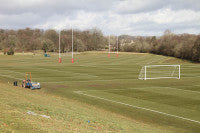
A fully automatic pop-up irrigation system was also installed to enable efficient and effective pitch establishment and on-going maintenance.
The building of the pitches was carried out in two phases, The Football Association of Wales (FAW) pitches were constructed in 2005-2006 with Sepp Blatter, the President of FIFA officially opening them in September 2009.
WHC returned in 2008 to begin the second phase of construction, to complete a further four natural grass pitches, three training areas and a world class 130 x 80m 3G artificial turf rugby pitch. A number of the pitches are floodlit with Abacus 200 lux lighting.
The timescale for the work was one full year, with the pitch constructions starting on two separate greenfield sites located on the Hensol estate in October 2008 and proceeded through the winter, a season normally avoided at all costs in the UK for this type of work.
This was made possible through the careful use of the company's specialist plant and machinery, excellent communication and close liaison between all parties.
An extensive cut and fill earthwork balance was undertaken, moving some 14,000m3 of subsoil to accommodate pitches. The earthworks operation was helped by the installation of large groundwater cut-off drains installed into the perimeter of the works areas prior to the cut and fill works commencing.
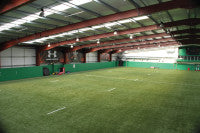
The 3G artificial pitch was constructed using TigerTurf Total Rugby artificial turf overlying a Brock performance base in order to offer the players the safest possible surface to train and play on.
The Brock was laid on 50mm of a specially blended aggregate which was used to achieve the required level tolerance whilst retaining porosity. Beneath this a depth of 300mm of porous sub-base stone was laid by laser grading bulldozer, all above a 'Triaxial' geogrid to stabilise the soft and wet ground encountered on site.
With the bulk of the work completed by June 2009 all that remained was to ensure seeding was completed by July, thereby making good use of air and soil temperatures.
All the pitches are maintained by the staff of the Vale Resort who liaise with Jonathan Smith and work closely with the managers of both the football and rugby facilities.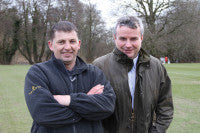
Geraint Scannell is in charge and has two assistants, Lee Parfitt and Adam Martin. Geraint, who has worked for the resort for thirteen years, was approached to look after the pitches and has not looked back. He enjoys his new challenge and has been pleased with the work they have achieved under the stewardship of Jonathan.
He gets on well with both the FAW and WRU staff, including Lee Evans, head groundsman at the Millennium stadium. David Jones, current manager of Cardiff City, has been impressed with the work Geraint and his staff have achieved since the pitches were completed.
Geraint introduced me to David Jones, who kindly spent some time talking to us about the merits of having good pitches and why it is important to respect the groundstaff and work closely together. They both meet on a regular basis and agree on what is needed whilst, at the same time, ensuring the pitches are used on a rotation basis.
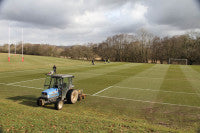 Mowing is done with a Ransomes Tri-king, cutting the football pitches at a height of 25mm-27mm depending on the time of the year, whilst the rugby pitches are kept at 37mm. Honda pedestrian rotaries are used to clean up the pitches after divoting. Geraint uses a SISIS Quadraplay, fitted with brush, spiker and roller to help present and repair pitches for play.
Mowing is done with a Ransomes Tri-king, cutting the football pitches at a height of 25mm-27mm depending on the time of the year, whilst the rugby pitches are kept at 37mm. Honda pedestrian rotaries are used to clean up the pitches after divoting. Geraint uses a SISIS Quadraplay, fitted with brush, spiker and roller to help present and repair pitches for play.
He marks out the pitches using a Bowcom transfer wheel (100mm width) line marker using supreme paint. There are plans to purchase another triple mower, probably a Toro, from local dealer, Ted Hopkins.
As for aeration, Geraint uses a combination of vertidrain tines to vary the depth of aeration plus an Earthquake rotary decompactor, working on a 6-8 week programme. White Horse Contractors have also promised to let Geraint have their SISIS V Mow on permanent loan.
The pitches are monitored for hardness using a Clegg hammer and, with readings hovering between 84-90 gravities, this is a score they are happy to maintain.
The pitches are regularly monitored by GEO Turf for traction and hardness. Surface hardness is monitored using a 2.25kg Clegg hammer and, with readings hovering between 84-90 gravities, this is a score they are happy to maintain.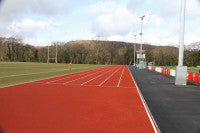
Jonathan Smith praised WHC for completing the pitches on time in, what was, a very wet summer, and Geraint and his staff for coming through a very tough winter, with the drainage working well, and keeping a decent amount of grass cover. Spring renovations will be centred around topdressing and overseeding along with some repairs to localised low spots.
Credit must be given to The Sports Council for Wales for their finical support of the WRU Centre of Excellence facilities, and the enduring hard work of Helen Adams from the Council who has been involved in the project for many years.
From what I saw the Football Association of Wales and the Welsh Rugby Union have some of the best facilities on offer in the UK.
The vision shown by Gerald Leeke and his family, and their support for sport in Wales, must be commended and the future success of international sport in Wales will be greatly influenced by the use of these excellent facilities.
